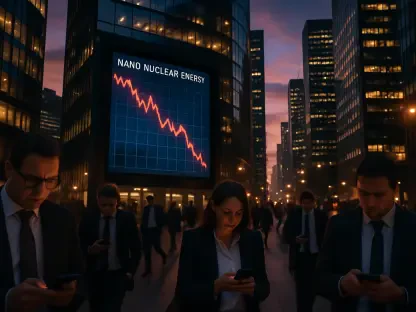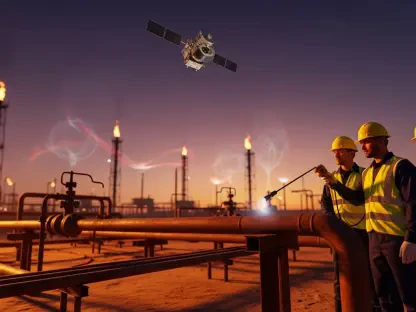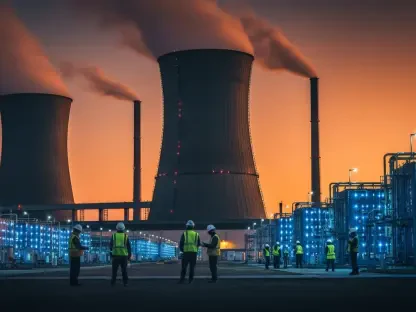I’m thrilled to sit down with Christopher Hailstone, a seasoned expert in energy management and nuclear policy. With his deep background in grid reliability and security, as well as his insights into international agreements on nuclear materials, Christopher is uniquely positioned to shed light on Russia’s recent decision to withdraw from the Plutonium Management and Disposition Agreement (PMDA) with the United States. In our conversation, we’ll explore the significance of this historic agreement, the implications of Russia’s withdrawal, the underlying tensions between the two nations, and the broader impact on global nuclear security.
Can you walk us through what the Plutonium Management and Disposition Agreement (PMDA) was and why it mattered so much when it was signed in 2000?
Absolutely. The PMDA was a landmark deal between the U.S. and Russia, signed at a time when both countries were looking to reduce the lingering dangers of the Cold War. The main goal was to dispose of at least 34 tons of weapons-grade plutonium each—enough material to make around 17,000 nuclear warheads. This was critical because, after dismantling thousands of warheads, both nations were sitting on massive stockpiles of this highly dangerous material. It was costly to store safely and posed a real risk of falling into the wrong hands. By converting it into less dangerous forms, like fuel for reactors, the agreement aimed to lower the threat of nuclear proliferation and build trust between two former rivals.
What does Russia’s decision to fully withdraw from the PMDA now mean for the relationship between the U.S. and Russia, especially on nuclear issues?
This withdrawal is a significant setback. It signals a further erosion of trust and cooperation on nuclear security, which is already strained. The PMDA was one of the few remaining frameworks where the U.S. and Russia worked together to reduce risks from their Cold War legacies. Pulling out sends a message that Russia is less willing to engage in mutual disarmament efforts, and it could complicate future negotiations on other arms control issues. Beyond diplomacy, it raises concerns about whether these plutonium stockpiles will remain secure, potentially heightening global risks.
Russia cited ‘anti-Russian steps’ by the U.S. as a reason for pulling out. Can you unpack what they might mean by that?
Sure. Russia’s likely referring to a range of U.S. policies and actions over the past decade or so. This could include economic sanctions imposed after events like the annexation of Crimea in 2014, as well as more recent measures tied to conflicts or cyberattacks. They’ve also repeatedly pointed to NATO’s expansion eastward as a threat to their security, seeing it as a direct challenge to the balance of power that existed when the PMDA was signed. While these grievances are real from Moscow’s perspective, verifying their impact on strategic stability is tricky—it often comes down to differing interpretations of intent and history.
Looking back to 2016, when Russia first suspended its participation in the agreement, what were the key issues driving that decision?
In 2016, Russia suspended its role in the PMDA, largely blaming U.S. actions like sanctions and what they called hostile policies. A big sticking point was a technical disagreement over how the U.S. was handling its plutonium. The original plan involved converting it into mixed oxide fuel for reactors, but the U.S. shifted to a cheaper method of diluting and burying it, which Russia argued didn’t meet the spirit of the agreement. They felt this undermined the deal’s purpose. The U.S., in turn, defended its approach as still effective and accused Russia of using the issue as an excuse to step back amid broader tensions.
What are the real-world consequences of Russia’s full withdrawal from the agreement at this point?
Practically speaking, this means the 34 tons of weapons-grade plutonium on each side, originally slated for disposal under the PMDA, will likely remain in storage indefinitely. That’s a problem because storing this material safely is incredibly expensive and requires constant vigilance to prevent theft or accidents. There’s always a lingering fear that unsecured plutonium could be diverted for illicit purposes, though both countries have strict controls in place. Additionally, abandoning the joint effort could stall progress on other nuclear safety initiatives, as mutual accountability takes a hit.
How does this withdrawal fit into the broader context of U.S.-Russia relations today, especially regarding other nuclear agreements?
It’s another piece of a very complicated puzzle. U.S.-Russia relations are at one of their lowest points since the Cold War, with distrust on both sides over issues ranging from military conflicts to cyber warfare. The PMDA withdrawal raises questions about the future of other nuclear deals, like the New START treaty, which limits deployed warheads and is already under strain. This move isn’t an isolated event—it’s part of a pattern where cooperative frameworks are unraveling, and that could push both sides toward a more adversarial stance on arms control.
What is your forecast for the future of nuclear security and disarmament efforts between the U.S. and Russia given these recent developments?
I’m cautiously pessimistic. The withdrawal from the PMDA reflects a deeper breakdown in dialogue, and without a major shift in political will, I don’t see a quick return to collaborative disarmament efforts. Both sides are likely to prioritize their own security over joint initiatives for now, which could mean more stockpiles sitting idle and greater risks over time. However, if there’s a window for diplomacy—perhaps through a third-party mediator or a change in leadership—there might be a chance to rebuild trust. But it’ll take serious commitment, and right now, the outlook is pretty uncertain.









